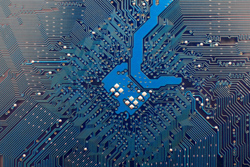Reading data stored in quantum bits
Among physical systems suggested as potential implementations of bits of quantum information, solid state systems offer a more realistic possibility of scaling to a large number of interacting qubits. More specifically, superconducting microelectronic circuits with Josephson junctions incorporated therein can realise artificial two-level systems. Researchers at the Chalmers University of Technology in Sweden coupled a single Cooper-pair box to an extremely sensitive electrometer to measure the excess or absence of charge on the superconducting island. The charge state of this charge qubit was determined by the number of Cooper-pairs tunnelled across Josephson junctions and was measured by a single-electron transistor configured for radio frequency readout. Despite the encouraging results, one aspect that eluded researchers concerned the efficiency of the measurement to extract all the relevant information within a restricted time. Under the auspices of the SQUBIT-2 project, funded by the Fifth Framework Programme, an alternative readout scheme was introduced, which exploited the effective capacitance of the single Cooper-pair box. By integrating the single Cooper-pair box into a resonant LC circuit, a closed loop with just a capacitor and an inductor, its effective capacitance could be determined by monitoring the induced charge. The artificial two-level and measurement systems incorporated into a single device provided for fast, and more importantly, a well-suited readout for a single Cooper-pair box. Furthermore, it offered significant advantages for readout of multiple solid state quantum bits coupled to each other and ultimately, the realisation of quantum gates. These advancements provided strong indication that solid state quantum systems could be used in the not so distant future as the fundamental elements for the manipulation of quantum information.







